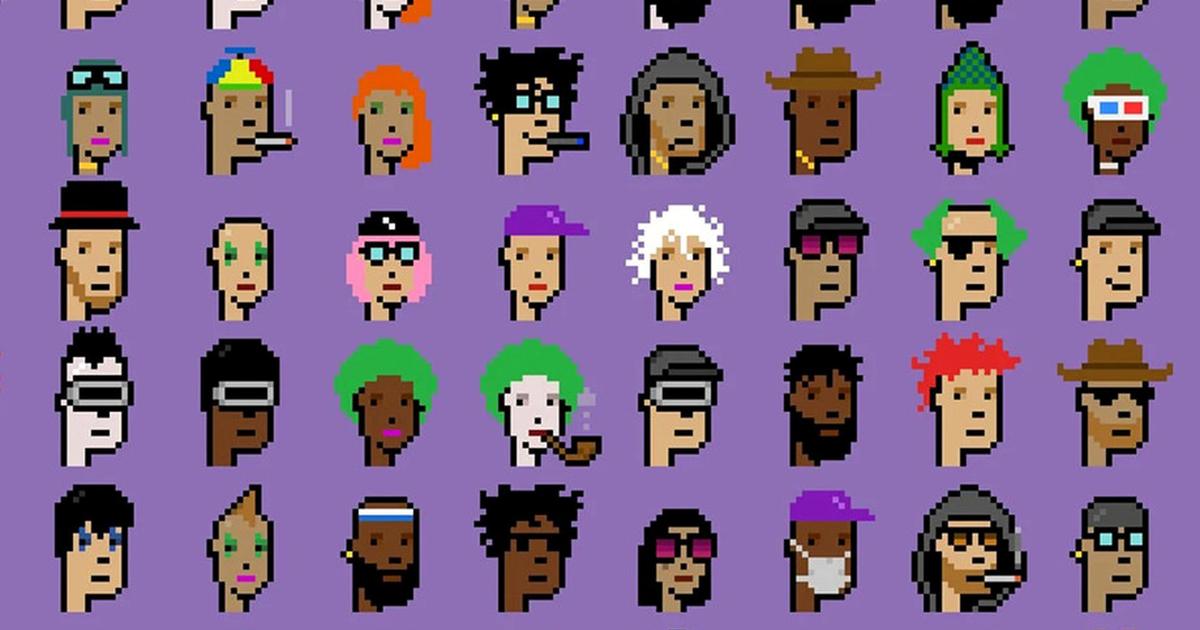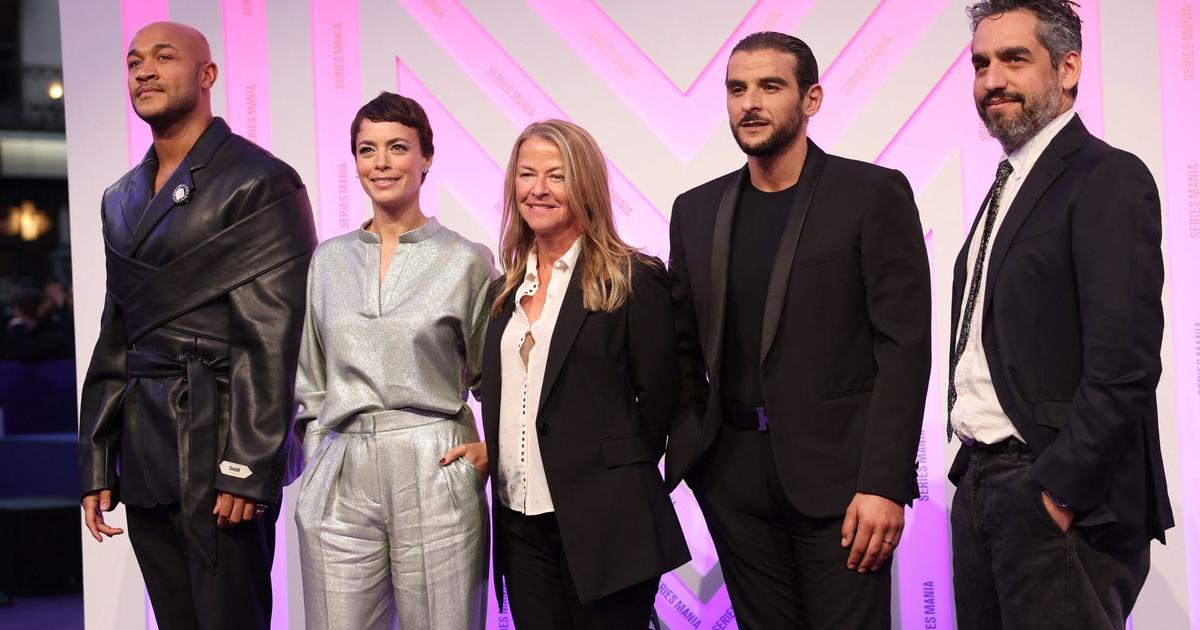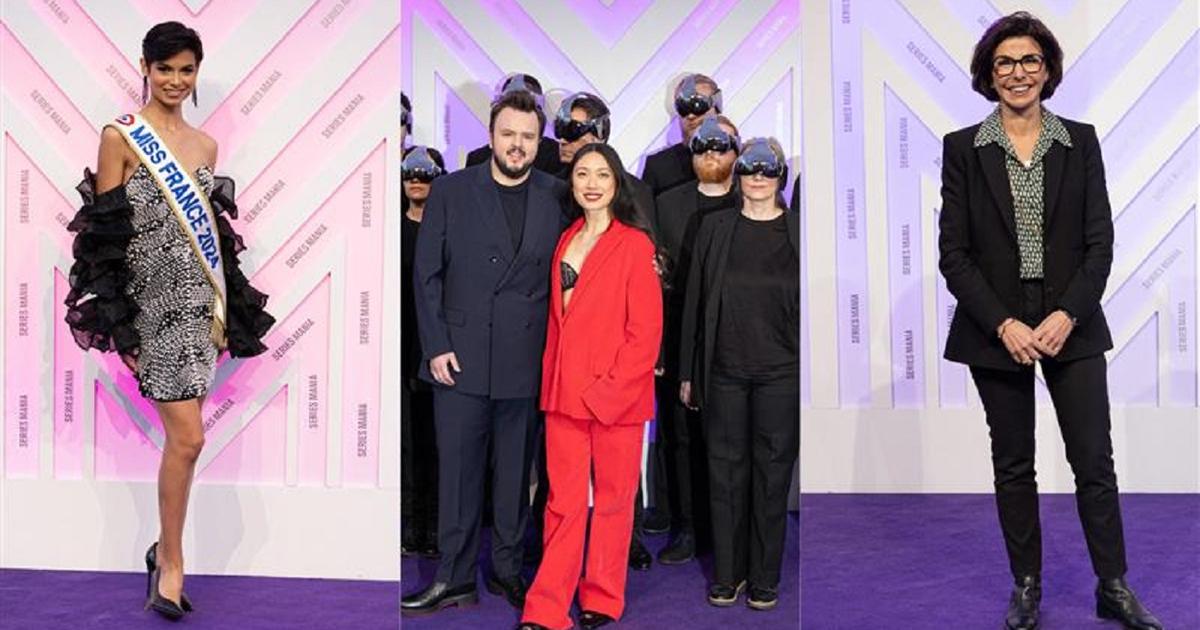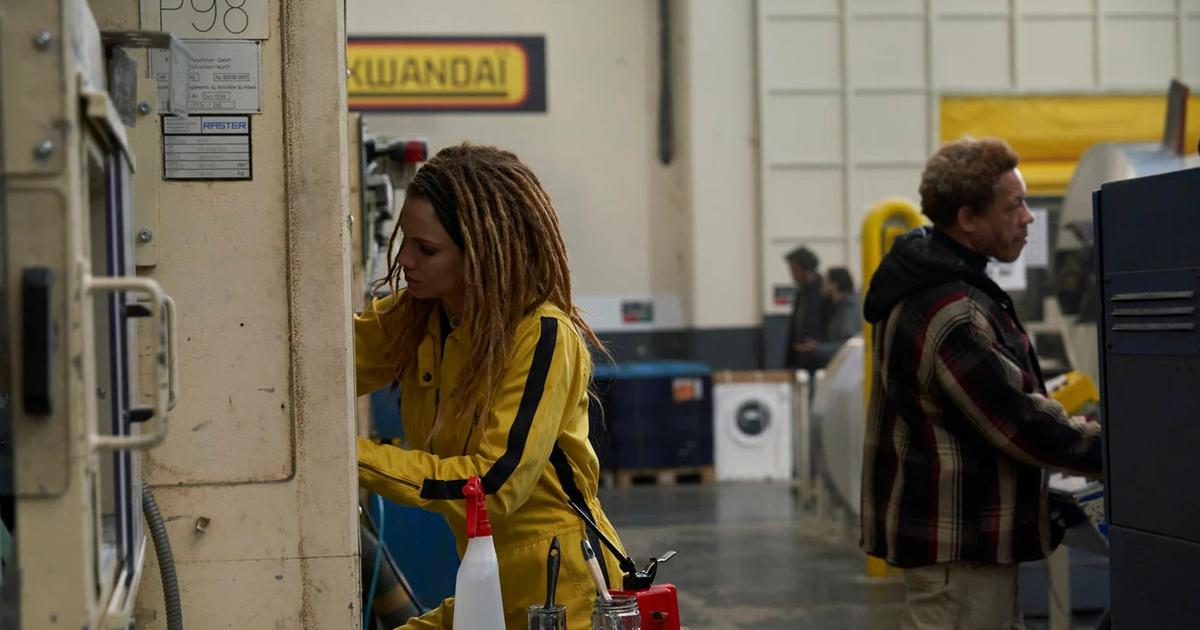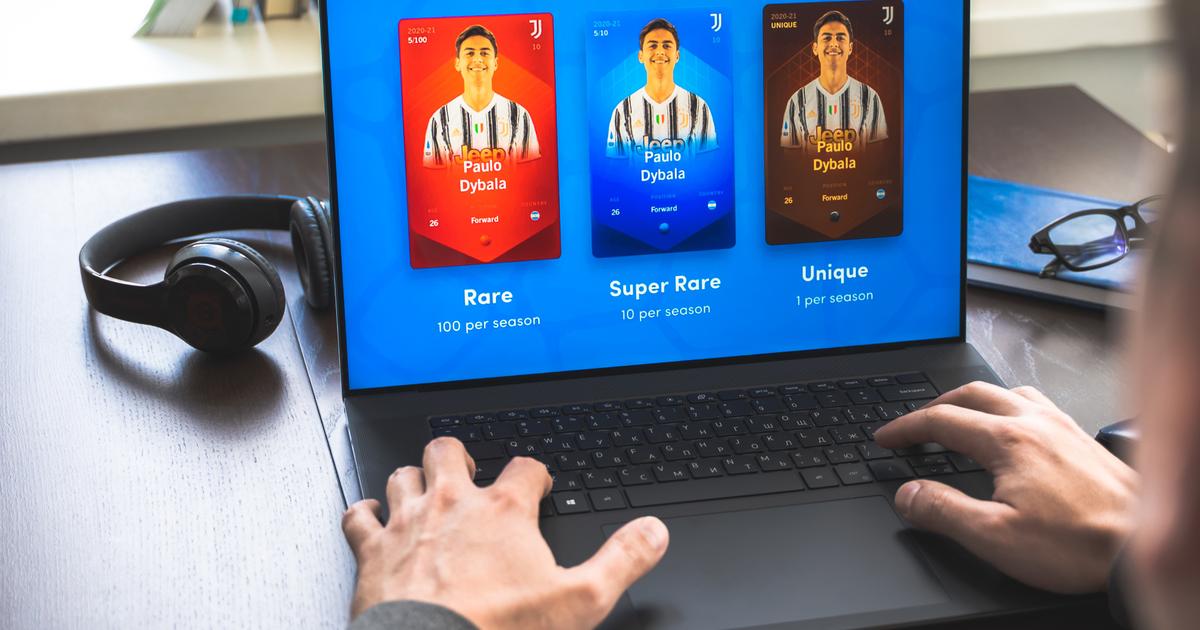Their names are WhaleShark, Colborn Bell, Eric Young, Daniel Maegaard… They each have hundreds, even thousands, of NFTs (
non-
fungible tokens or non-fungible tokens), these digital property certificates which make it possible to authenticate no any digital file (tweet, image, video, music, etc.).
Their collection is estimated at several million dollars, at least on paper.
Finally… on screen.
Special feature: it is visible to everyone.
With one click, you can know who (at least which avatar, because many collectors use nicknames) owns what.
NFTs are stored on the blockchain system, a single decentralized transaction register that is transparent and tamper-proof: anyone can access it and check its content.
Read alsoLuxury avatars, immersive fashion shows: what if the metaverse was the future of fashion?
Welcome to the age of ultra-transparency.
“In the art world, traditionally, the names of private collectors were never given.
Everything was very hidden, although in recent years things have started to change… In crypto-art, all collections are “archivable”, and this can even be an additional speculative factor.
You can easily find out what your neighbor owns.
Everyone can know the size of your collection, its value, how many CryptoPunks (NFTs that take the form of small pixelated characters, editor’s note) you have…”, underlines Caroline Vossen, gallerist officiating for more than thirty years at the Gallery Claude Bernard, in Paris, who launched L'Avant Galerie in 2019 – the first in France to accept cryptocurrencies as a means of payment.
NFTs or the symbol of an egotistical world in which the relationship to money would be more than ever uninhibited?
Not that easy…
In video, women in digital: the key figures
Post success on social media
“The crypto-art market is a reflection of the current world, that of hypermediatization, profusion, social networks… In general, we are also evolving in a society where money shows itself more and more », Analyzes Caroline Vossen, who has just organized an exhibition of NFT on the trash art movement with, among others, the artist Robness.
Another peculiarity of the market: digital works of art can be downloaded by everyone.
In the physical world, a master painting will be kept preciously out of sight or exhibited at a very private dinner.
The work
Everydays: the First 5000 Days
, by the artist Beeple, sold for 69.3 million dollars at Christie's on March 11, 2021,
But only Metakovan (we have since known that it is Vignesh Sundaresan, an Indian millionaire), the buyer of this digital collage, can claim ownership of the NFT: he can keep it, transfer it to someone, or sell it.
A very narcissistic stamp?
“This is the argument advanced by the anti-NFT movement called Right-Click, Save As (read: right-click and save), which criticizes with ironic memes the disproportionate value that we give to crypto-art .”
But this ignores the importance of the notion of digital rarity: “An NFT authenticates the native file of a digital creation, its author and its owner.
This is where all the innovation is,” underlines Fanny Lakoubay, crypto-art and NFT advisor, based in New York.
The crypto-art market is a reflection of the current world, that of hypermediatization, profusion, social networks...
Caroline Vossen
Increase your popularity rating
If it is a question of ego in the world of virtual objects, it is also because the culture of “flex” is important: being able to show others that you have something rare, expensive and desirable.
The word "flex" comes from English.
Taken in its figurative sense, it means "to display one's strength".
The expression comes from the world of rap and R'n'B.
“Why would I want a collection of things that no one can see, when I can have a collection of digital objects that everyone can see?” asked Ian Rogers, director of customer experience at Ledger, famous cryptocurrency wallet company, at the microphone of Imran Amed
(The Business of Fashion)
in November 2021.
The “flex” is being able to prove that one is capable of spending thousands of euros for a CryptoPunk, for example – these new luxury accessories.
These are 10,000 NFTs which each represent a unique character, highly pixelated digital works, automatically generated by an algorithm.
The sales record is held by the CryptoPunk 5822, which soared in February to 8,000 ethers (ETH) – ether is one of the main cryptocurrencies, with bitcoin –, representing around 22.7 million euros at the time of sale.
“At the end of 2021, according to data from nonfungible.com, art still constituted only 9% of the volume of NFTs, while “collectibles” (a series of digital figurines, including CrypoPunks, little considered in the art market art, editor’s note) represented 76% of it”, specifies Fanny Lakoubay.
Full screen
Eva Longoria is part of the World of Women community.
worldofwomenNFT
When NFTs play the engagement card: the three feminist communities you need to know
1. BOSS BEAUTIES.
An initiative created by entrepreneur and philanthropist Lisa Mayer to, in particular, facilitate the education of young girls in the fields of technology.
bossbeauties.com 2. WORLD OF WOMEN.
A collection of 10,000 NFTs/avatars of women committed to inclusivity.
Actresses Reese Witherspoon and Eva Longoria have already acquired theirs.
worldofwomen.art 3. WOMEN RISE.
A project led by artist and activist Maliha Abidi, which aims to contribute to the defense of social justice.
womenrise.art
Belong to an exceptional community
And to "flex", you can now take a photo of your CryptoPunk on your Twitter profile, as rapper Jay-Z did, for example.
Tech figures even use their CryptoPunk as an avatar on their LinkedIn account.
"Acquiring an NFT like this is also an entry ticket to unique experiences, access to previews, special events, adventures...", underlines Paul Mouginot, co-founder of the agency of metaverse bem.builders.
It is in any case the sign that we belong to a very private club.
“There have always been socialite
clubs
for very wealthy art collectors, but the idea of community is even more developed with NFTs.
With a Bored Ape, for example, one can be invited to a private party on a yacht in Miami or a concert in Brooklyn.
Very hyped “benefits” which mainly attract young people, still mainly men, between 20 and 30 years old, from the world of tech or finance”, explains Fanny Lakoubay.
Young technophiles and cryptorich who feed all the fantasies.
“At the time of the dizzying rise of cryptocurrencies in 2017, it was said that 18-year-old kids who had invested very early in bitcoin or ether liked to buy Lamborghinis and beautiful collectible watches.
The president of Christie's France, Cécile Verdier, says that of the 33 people who bid on Beeple's work, 30 were totally unknown to the auction house, despite having been in the business for more than three hundred years!
What is certain is that some receive offers of several hundred thousand euros every day for the purchase of their Bored Ape and that they have a well-stocked wallet, ”says Olivier Rivard-Cohen. , founder of Cacio e Pepe,
Full screen
The Women Rise project, led by artist and activist Maliha Abidi.
womenrise.art
With this logic of “flex”, it is not surprising that many stars are embarking on the adventure of NFTs.
Jay-Z and Paris Hilton rank 6th and 7th, respectively, in the ranking of the most important influencers in the NFT industry, according to
Fortune
magazine .
Paris Hilton notably collaborated with digital artist Blake Kathryn to produce an artwork titled
Iconic Crypto Queen,
which sold for over $1 million.
In January, footballer Neymar joined NFT's select group of celebrity owners by buying two Bored Aped for nearly $1.1 million.
The new codes of crypto-art
This breakthrough of the stars in the middle is not always seen with a good eye.
To be accepted by the crypto-art communities, you have to know the codes and respect them.
Beyond these logics of social distinction, there are also mechanisms of “conquest”.
“Rapper Snoop Dogg has earned his place on The Sandbox metaverse by exploring the platform as a subculture.
He revealed belatedly that he was hiding behind the avatar Cozomo de'Medici, whose NFT collection was renowned for its good taste, ”explains Paul Mouginot.
The very strong speculation of the market despaired some pioneer artists, like Robbie Barrat, for example.
“Investments are becoming disproportionate.
For many artists who were there at the very beginning, the somewhat utopian idea of creating a community with an economic model based more on sharing is lost,” says Caroline Vossen, who recalls that buying a digital work of art is not just a question of "flex".
"Some collectors are not at all in this logic: by buying an NFT, they buy cult images, traces of an era."
The hype would therefore be the tree that hides the forest.
“We meet collectors who are more and more specialized in their knowledge.
The starting point is often a desire to get to know NFTs better, but over time they develop their tastes and interests.
Some cling to the
generative art or to artists who have incredible stories, engineers, biologists.
Others become patrons of causes through their purchases, by supporting under-represented artists, for example,” concludes Fanny Lakoubay optimistically.
Full screen
Boss Beauties is an initiative created by entrepreneur and philanthropist Lisa Mayer.
Boss Beauties
"The signature of a digital good gives it a rarity"
To make NFT culture accessible to as many people as possible, Anthony Masure, associate professor and head of research at the Haute École d'art et de design de Genève (HEAD-Geneva) will unveil next September a methodological guide in the form of an illustrated lexicon free of rights.
This specialist in the creative and economic implications of blockchain technologies in the world of art and design, also co-founder of the Hint3rland creative studio, gives us some didactic elements of this new semantics.
Madame Figaro.-
Concretely, what is an NFT?
Anthony Masure.-
It is a tamper-proof certificate that allows you to authenticate and sign digital goods (images, videos, tweets, websites, etc.), but also to attach a digital signature to a physical object (title deed, archives , legal act…).
If we take the example of a digital image that has become NFT, it can continue to be distributed and copied endlessly on the Web, but only one will be signed.
We can make the comparison with a vinyl record that is pressed in large series: if we have a copy signed by the artist, it will be worth much more.
In the same way, the signature of a digital good gives value to the latter and confers on it a rarity.
An NFT is a tamper-proof certificate which makes it possible to authenticate and sign digital goods, but also to attach a digital signature to a physical object.
Anthony Masure
When was the first NFT born?
A rudimentary form appeared in 2015 on the bitcoin network, but NFTs, as we know them today, were born in 2017. The first two best-known initiatives are CryptoPunks and CryptoKitties – the latter having helped set the standard NFT technique.
Both of these projects are what are known as “collectibles,” collectible images with varying levels of rarity, like real-life Panini cards.
CryptoPunks are 10,000 images of 24-pixel stylized faces, and CryptoKitties are virtual kittens that can be collected, raised and sold.
How come a CryptoPunk today can soar over $20 million?
It has become an iconic piece of crypto culture.
For people who have made a lot of money with cryptocurrencies, owning a CryptoPunk is owning a moment in history that allowed them to succeed.
The play of supply and demand and speculation ensues.
In addition, auction houses like Christie's and Sotheby's took an interest in these creations and began to sell them as art.
They have therefore become listed works.
What is the point of buying a CryptoPunk, intangible by definition, rather than a Rothko painting?
People who come from the crypto culture do not necessarily go to traditional museums, they live 100% in the digital culture.
Owning a digital object is more socially rewarding for them than owning a physical work, because they can display it to the world through their avatar – and everyone can verify that they are the sole owner of this good.
If you post a photo of a Rolex watch on Instagram, who tells me you really bought it?

